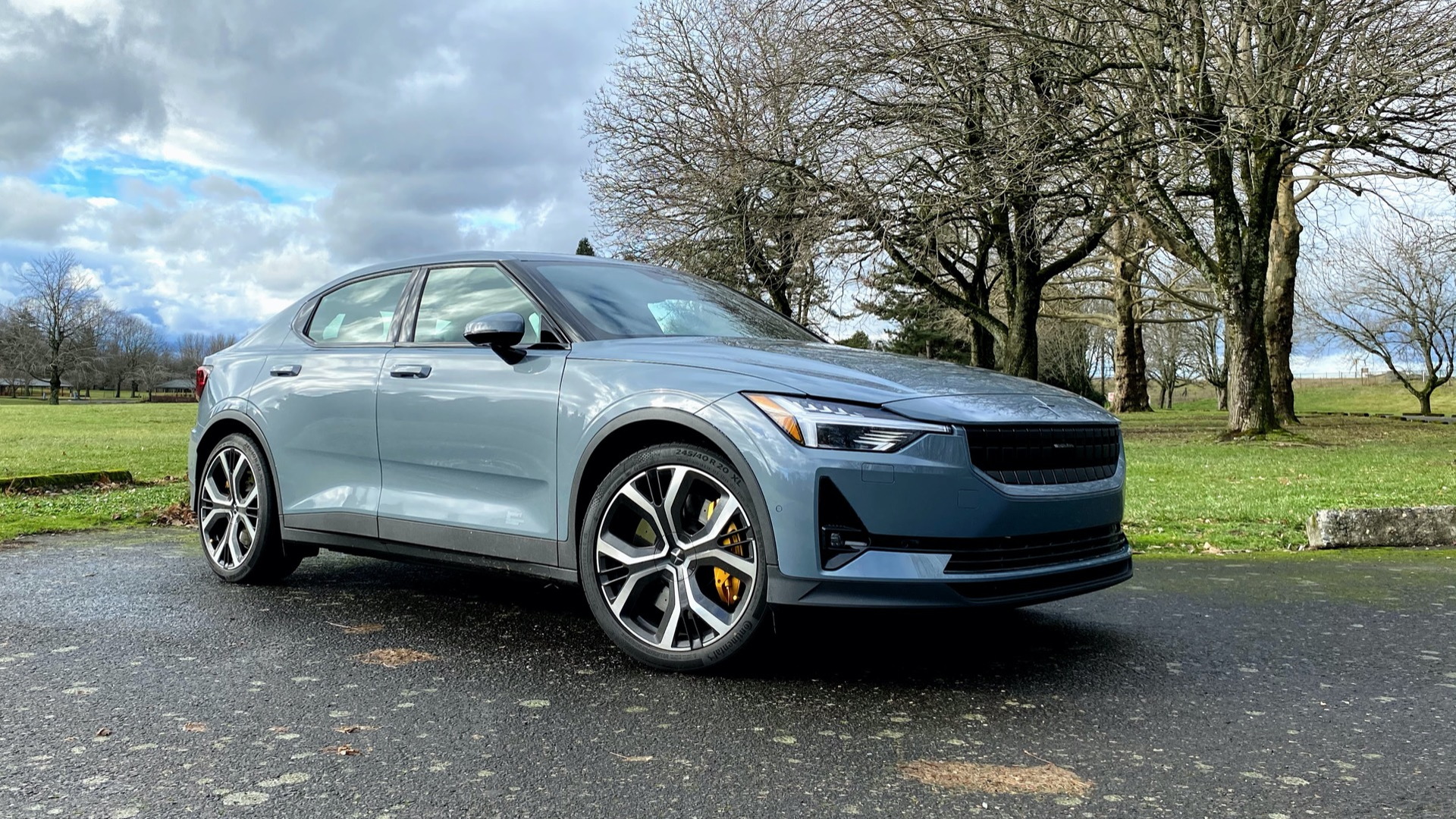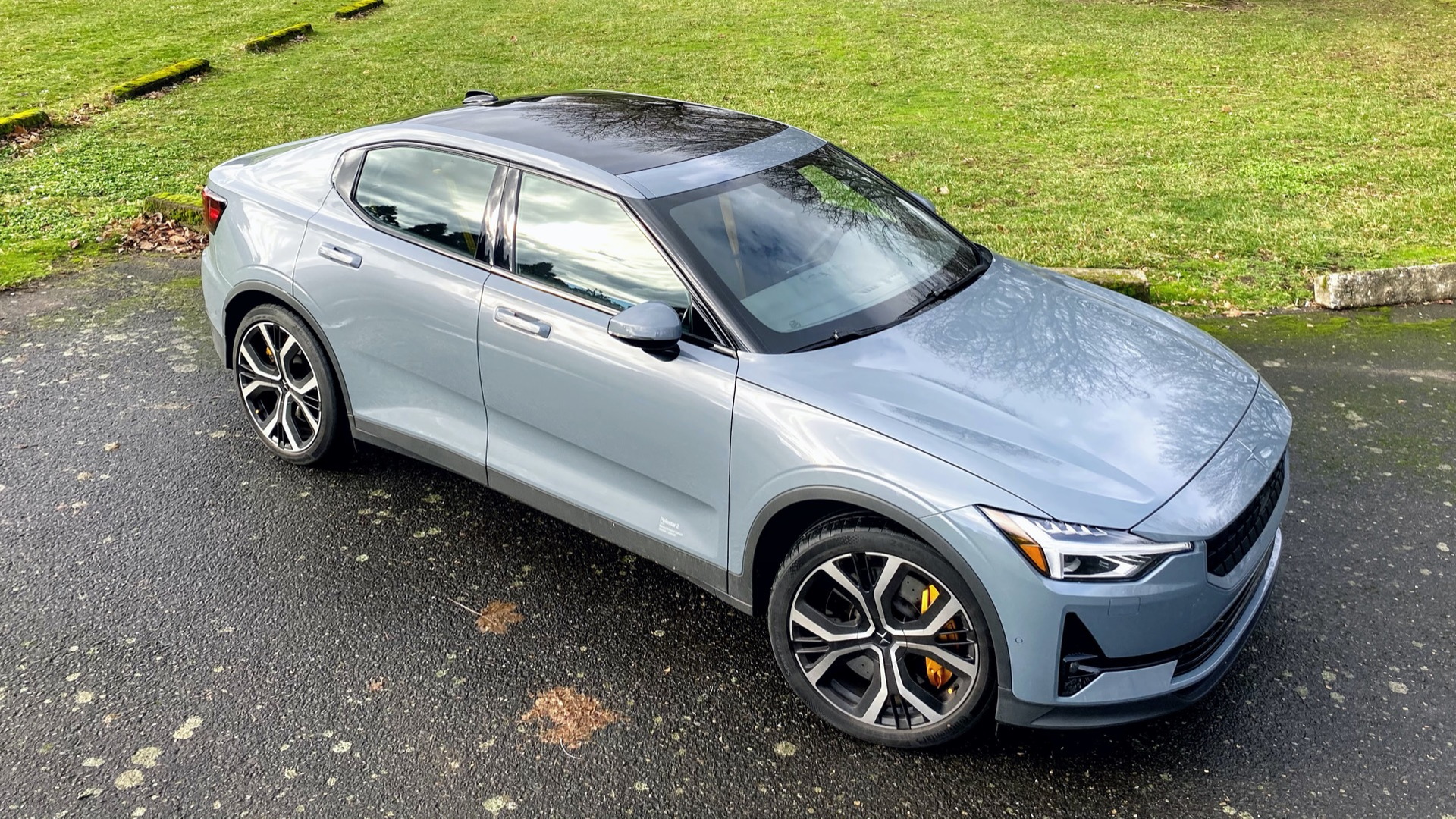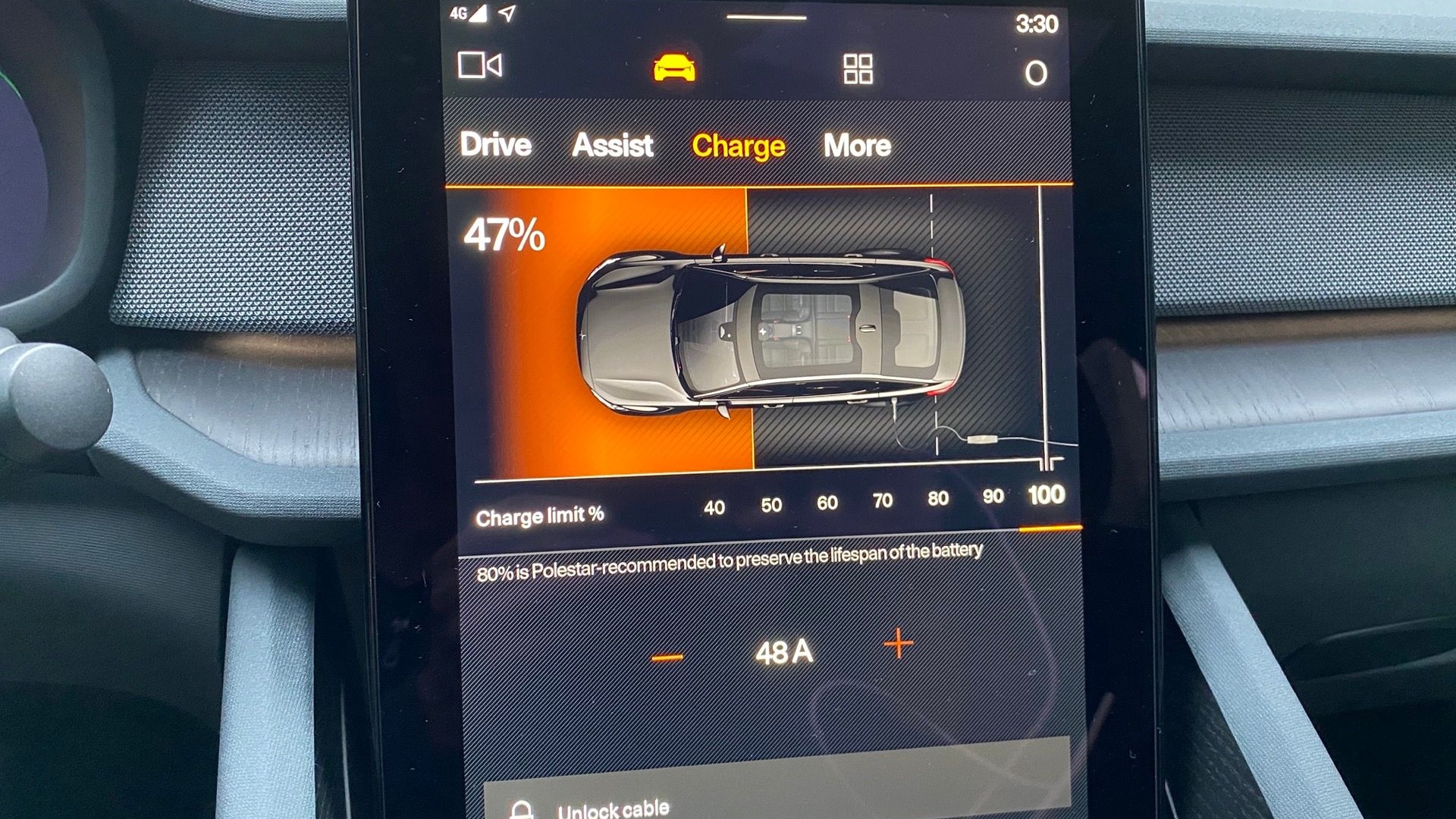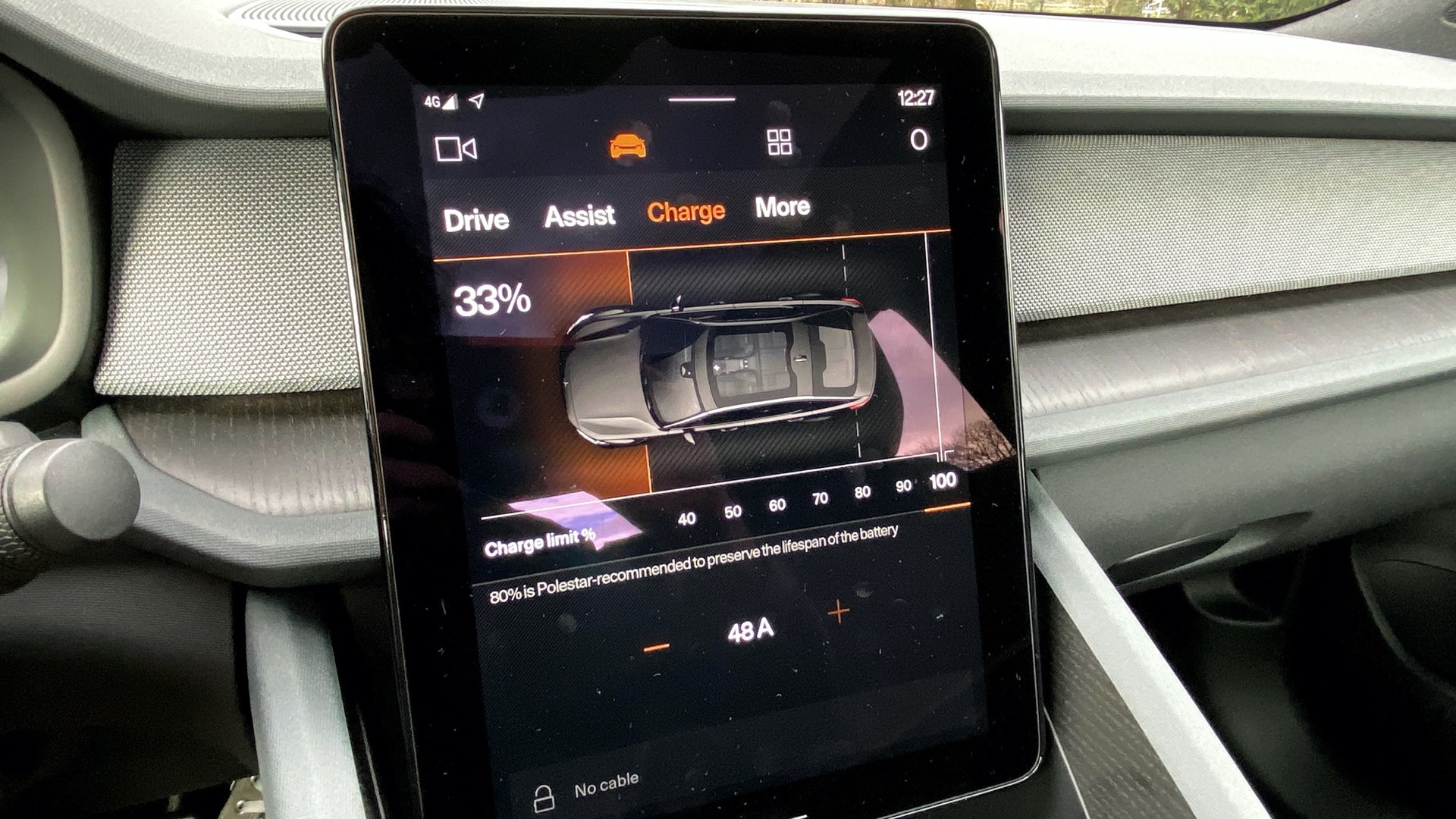Otherworldly is the first impression I kept returning to in my first few hours driving the Polestar 2 electric car.
I’ve owned multiple Volvos, all made before this millennium, and since then I’ve driven most of the Swedish brand’s important modern models, from sporty R, R-Design, and Polestar models to its plug-in hybrids and new XC40 Recharge EV. And driving the Polestar 2 triggered a sense of being in an alternate reality—one in which Volvo’s somewhat more adorned, lower-contrast interiors and plush ride of the past half-decade, starting with its current XC90, never happened.
It probably didn’t help that the experience corresponded with some binge-watching of Counterpart. A bit like J.K. Simmons’ brilliant Howard Silk, subtle differences between collective experiences manifested in some different perceptions of the future. The same holds true in the Polestar 2, where it looked and felt so much like a Volvo that seeing Polestar’s chevrons on the steering wheel was a bit disconcerting.
The Chinese-made Polestar 2 is built on the same CMA platform as the Volvo XC40 Recharge, which I’d driven many weeks prior. Although they were engineered by the same Sweden-based development team and share some of the same core interface decisions, that’s about where the similarities end.

2021 Polestar 2
The Volvo XC40 Recharge is a delightfully soothing, minimalist small crossover that will feel familiar to Volvo owners and put them at ease about saying farewell to gas pumps. What I didn’t expect, when I drove the Polestar 2 hatchback in one of the chilliest, darkest parts of a Pacific Northwest winter, is that it feels more like the Volvo of the past than the XC40 Recharge—or at the very least, triggers far more nostalgia buttons for Swedish performance.
The Polestar 2 simultaneously beckons and plays the stoic, like some of Volvo’s best and most memorable performance sedans. With stealth and quiet added to the mix, it has about the same kind of size, urge, and driving feel of the S60 Polestar of a few years ago, combined with the sharpness of the S60 R of more than a decade ago.
The P2 launches with far more urgency than the dual-motor Ford Mustang Mach-E, and it has loads of grip from its Continental SportContact 6 245/40R20 tires. My car had the optional Performance Pack, with adjustable Öhlins dampers. Polestar noted that the firmness could be adjusted on request (manually, by a tech), but that it was set on the firm side to show off the model’s performance capabilities.

2021 Polestar 2
As I briefly pressed the P2’s performance closer to the limits, it didn’t betray those Volvo roots. Like those other former Swedish performance sedans, it deferred to understeer but, when pushed into it, felt reassuringly neutral. Its dual permanent-magnet electric motors together make 408 horsepower and 487 pound-feet of torque and can get this four-door fastback to 60 mph in an official 4.5 seconds.
Part of it is that, outside of the performance goodies that it flaunts—like the Brembo calipers, showy 20-inch wheels, black roof panel—the Polestar 2 doesn’t feel flashy. Aside from the gold seatbelts, it actually feels un-flashy, in a very Swedish way. The cabin avoids the use of much if any brightwork, and vegan WeaveTech fabric covering the long, thigh-supporting sport seats and the coarse door trim together remind me of what you encounter in backpacking gear or athletic wear. The hatch allows a wide opening and impressive cargo configurability; it’s not that but the rear-seat space that’s the disappointment (more knee room than head room).

2021 Polestar 2

2021 Polestar 2

2021 Polestar 2

2021 Polestar 2
Polestar doesn’t offer a lot of different settings to play around with, unlike electrified German sport sedans. After sampling the lighter and firmer settings for the steering, and the Low level of regenerative braking, which your passenger might like a bit better, I decided the default modes—and the more aggressive regen—were just right for most driving. Idle creep can be turned on or off to your preference.

2021 Polestar 2

2021 Polestar 2

2021 Polestar 2
My test Polestar 2 wasn’t being all that efficient about its business, but with a short couple days of time to focus on it, I didn’t get the chance to get all the way through using or charging what the 78-kwh battery pack (75 kwh usable) can do.
Its official EPA range is 233 miles, however I saw well under that, during temps around 50 degrees but a dampness that required the climate system to be running all the time. Range plummeted for some of that time—from an estimated 160 miles at 79% state of charge, for instance, to just 55 miles remaining 61 miles later, at 39%, when it gave me a low-battery warning.
Polestar encouraged me not to use my phone but instead the resident system for navigation and charging-station waypoints, and while the system might be a good crutch for finding a charger of any kind in a pinch, it didn’t allow sorting of chargers by charging rate or help me prioritize fast-charging. The natural-language voice commands for route input worked great, but countless variations asking it to plan my charging stops were fruitless.
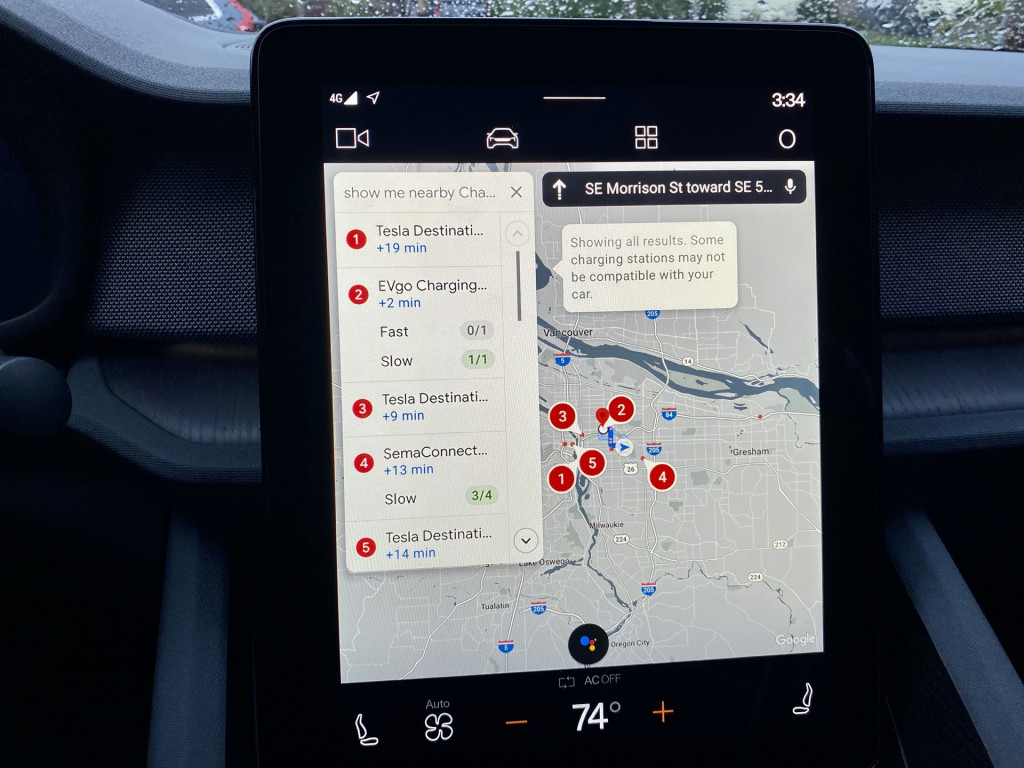
Polestar route planning likes Tesla Superchargers
Since the Polestar 2 has received at least one major update since then, I won’t dwell on this. And it’s quite possible there was a setting that might have better allowed the system to string together a trip. But more EVs need well-orchestrated full-trip charging planners that understand what hardware they’re sending you to. Automakers are at least delivering talking points that they understand this—in GM’s Ultium vehicles like the upcoming GMC Hummer EV, for instance. Until then owners will need to turn to specialized charging trip-planning apps.
Although the Polestar 2 has been offered as more of a full-line vehicle—and more of an affordable one—in other markets, it’s delivered in only one spec to U.S. buyers, with just a few options. And it’s a pricey one, which cements this model’s space as a niche model. My test car added up to $65,200, including a $1,300 destination fee and $4,000 Performance Pack.
You’re right; I haven’t mentioned Tesla or the Model 3 even once in this review until now. I soundly disagree with my colleagues that this is a rival to the Model 3 or Model Y. The Polestar is of a different world, delightfully so.

